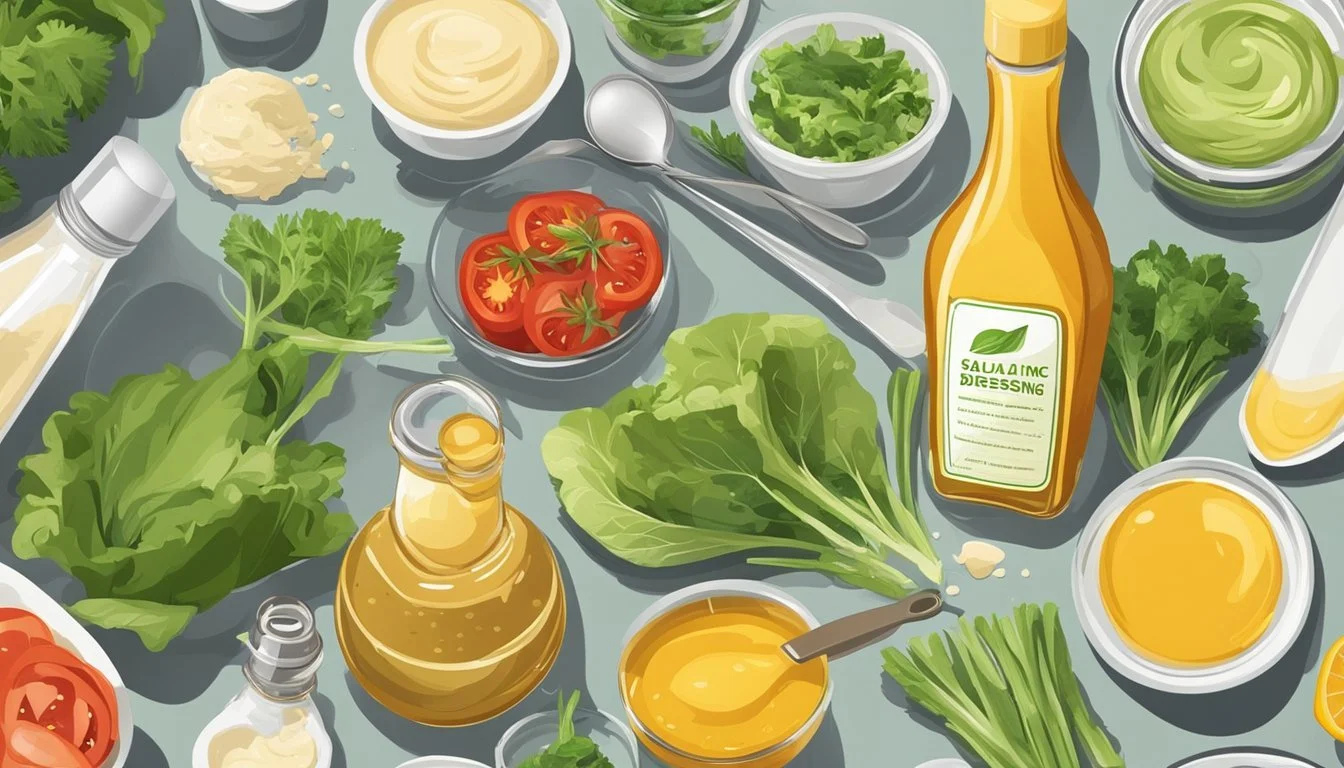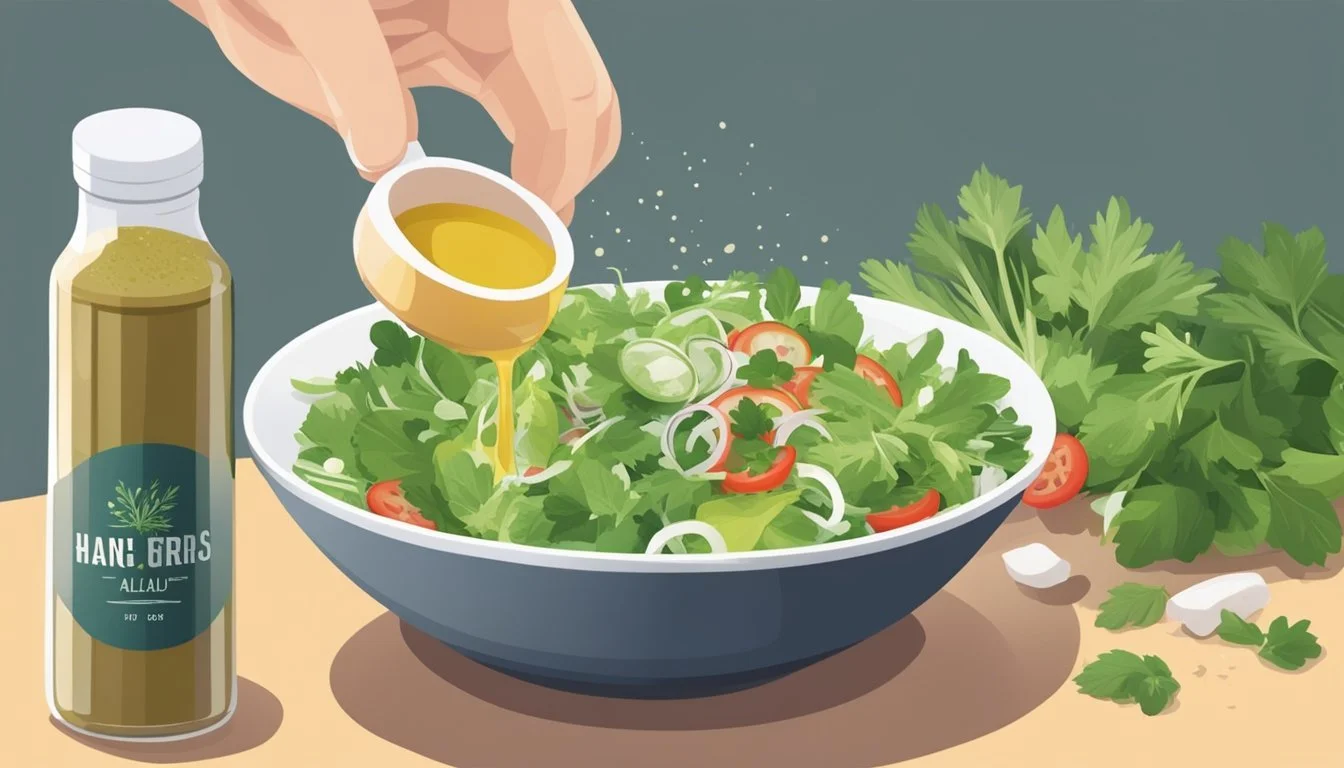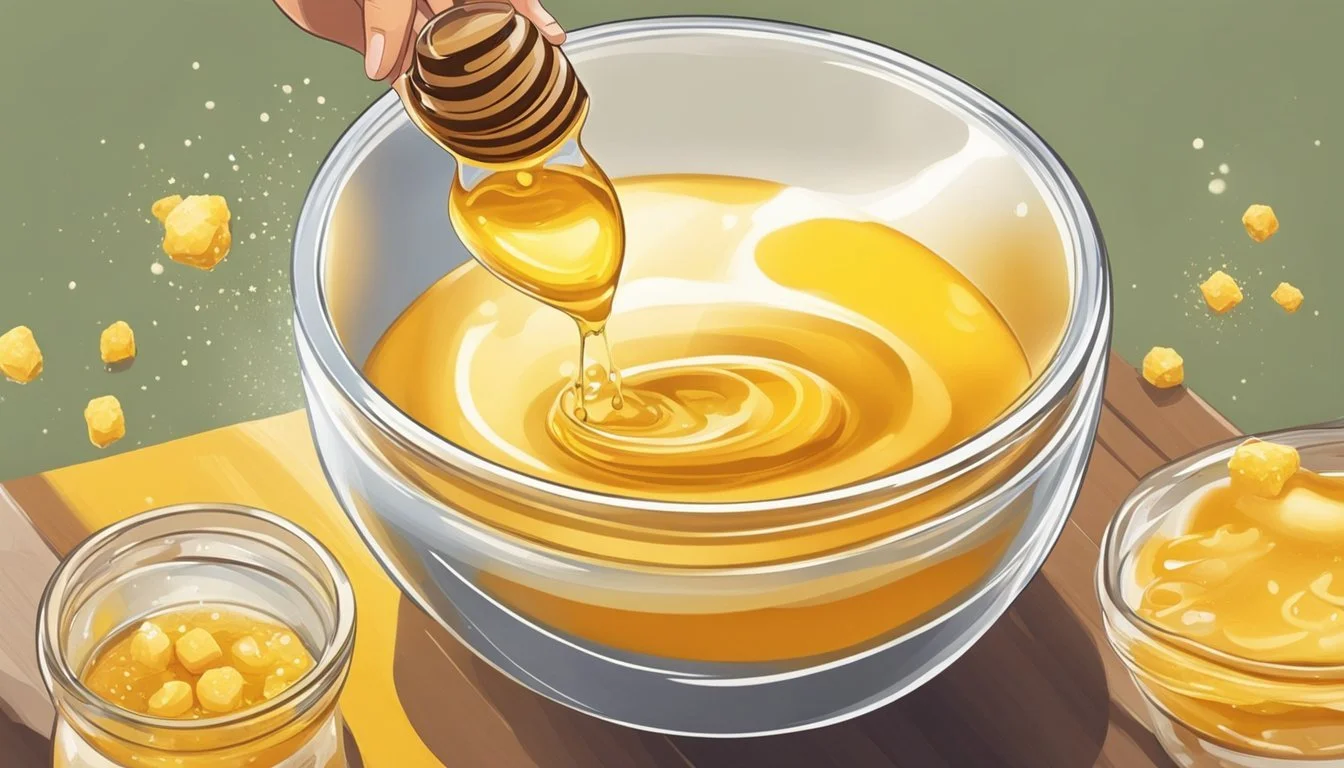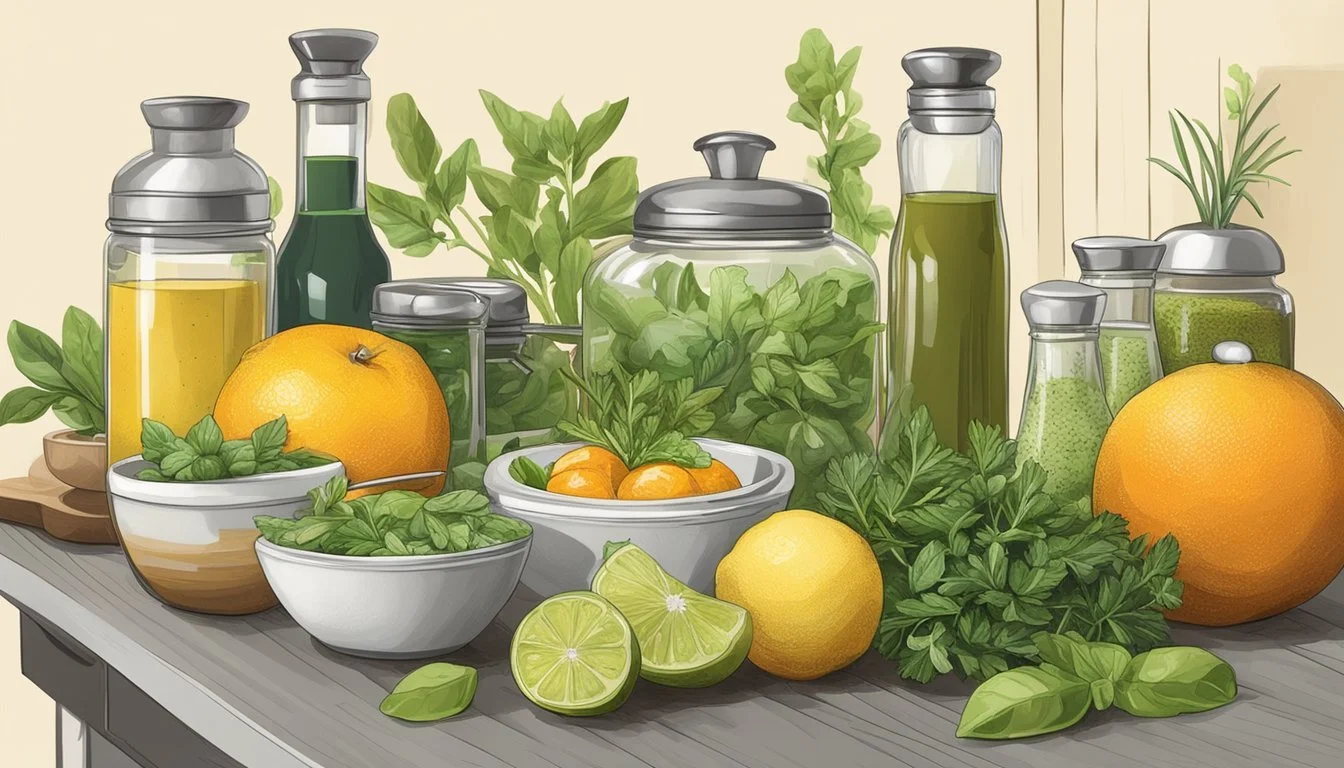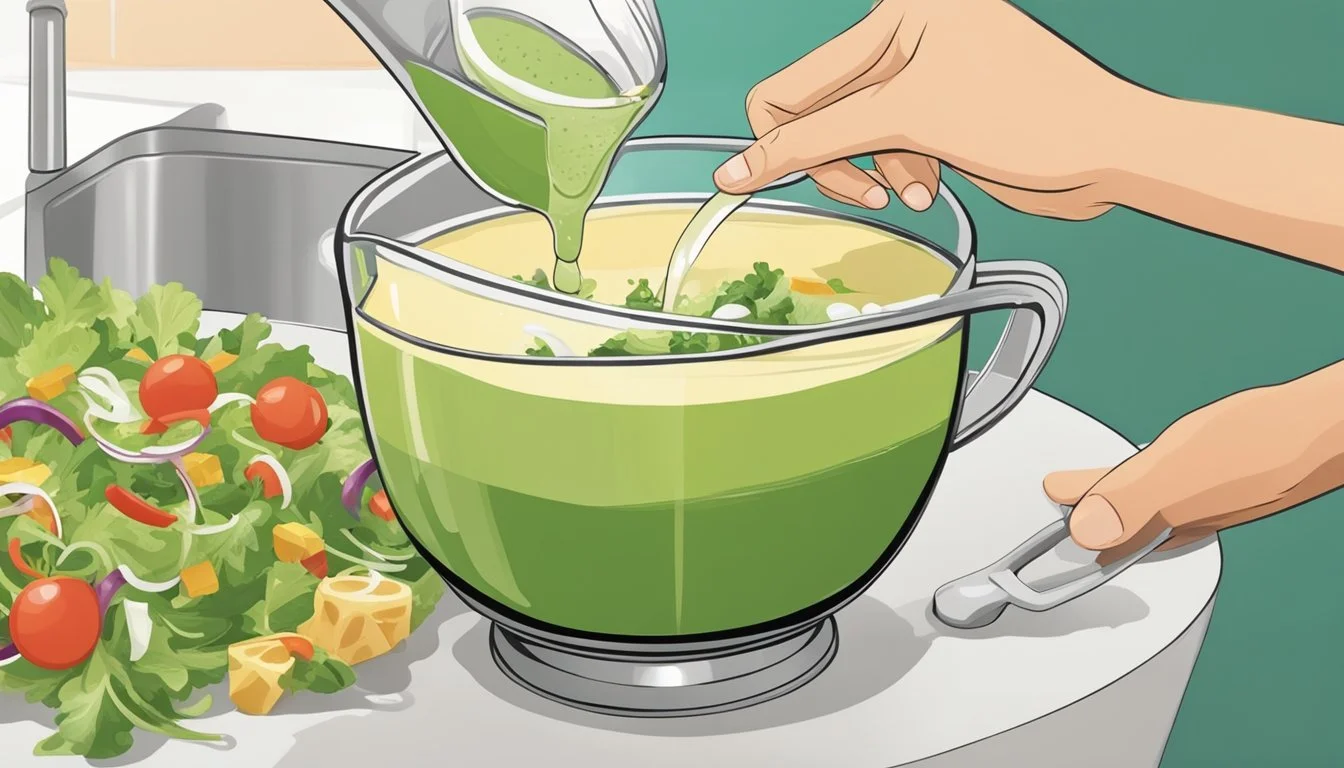Fixing Overly Salty Salad Dressings
Tips for Restoring Balance
Salad dressings are a crucial component of any salad, offering a burst of flavor that turns a simple mix of ingredients into a delightful dish. However, the culinary misstep of an over-salted dressing can render a salad unpalatable. This issue is a common one, but with practical solutions, it can be rectified without the need to discard an otherwise tasty dressing. Addressing an over-salted salad dressing isn't just about dilution; it involves a savviness in balancing flavors to achieve the desired taste.
Achieving the perfect dressing is akin to composing a symphony of flavors, and each note must harmonize with the others. When the salt content hits a discordant high in this melody, certain ingredients can step in to modify the flavor profile. Instead of starting from scratch, one can integrate salt-absorbing components or incorporate contrasting flavors that align with the dressing’s base, effectively mellowing the salty taste. By employing creative adjustments, food enthusiasts can transform their over-seasoned dressings into well-rounded complements for any salad.
Understanding these techniques is essential for any home cook or culinary aficionado. It empowers them to rescue their fare from the brink of being overly salty, thus conserving both ingredients and effort. This knowledge not only applies to salad dressings but extends to a wider range of cooking practices, reinforcing a cook's adaptability in the kitchen.
Understanding Salinity in Salad Dressings
Salad dressings are a delicate balance of flavors where salt plays a critical role. In culinary terms, salt is more than a seasoning; it's a flavor enhancer. When used judiciously, it deepens and complements other tastes present in the dressing.
Sea Salt: Often used for its coarse texture and slight mineral content.
Kosher Salt: Preferred for its flaky, easy-to-sprinkle grains.
Table Salt: Denser than kosher salt so it's easy to overuse if not measured properly.
The sodium content in these types of salt can vary, affecting the overall salinity of the dressing. It is crucial to understand how different salts disperse differently in liquids and how each type can contribute to the salinity level.
Balancing Techniques:
Taste as You Go: Prevent over-salting by tasting the dressing during preparation.
Add in Parts: Start with less salt than a recipe suggests. One can always add more if needed.
Consider Other Ingredients: Salting food like salad components will contribute to overall salinity. Be mindful of ingredients like cheeses or olives that are inherently salty.
In summary, understanding and controlling the salinity in salad dressings are essential in achieving a harmonious flavor. Balancing salt is a craft, requiring careful addition and consideration of each ingredient's contribution to the sodium content. Using these strategies, a cook can avoid an overly salty dressing, creating a balanced and flavorful dish.
Common Causes of Over-Salting
When preparing salad dressings, one must be mindful as over-salting can quickly overpower the intended flavor. Certain pitfalls often lead to this culinary misstep which can be avoided with measured precautions.
Misjudging Salt Quantities
One of the most common mistakes in salad dressing preparation is misjudging the amount of salt required. Table salt varies in density and volume compared to kosher or sea salt, so a direct substitution can result in an over-salted dressing. Following a recipe's recommended measurements and using the correct salt type are vital to prevent excess.
Table Salt: denser, use less
Kosher Salt: coarser, use more
Sea Salt: varies in coarseness, adjust accordingly
Ingredient Imbalances
Ingredient proportions are key in creating a balanced dressing. A misbalance where salt-heavy seasonings and ingredients overshadow others can lead to over-salting. Ingredients like cheeses, olives, and capers can contribute additional salt, and their quantities should be adjusted to account for their presence.
Cheese: naturally salty, reduce added salt if included
Olives/Capers: briny, consider rinsing or using less
Accidental Pour
At times, the culprit of an over-salted dressing is a simple accident, such as a shaker lid falling off or a slip of the hand. This results in a sudden influx of salt that can drastically alter the taste.
Shaker Tips: ensure lids are secure, pour carefully
Measurement: use measuring spoons to avoid freehand errors
Immediate Fixes for Overly Salty Dressings
When a salad dressing turns out too salty, it isn't necessary to discard it. Instead, one can implement a few quick fixes to rebalance the flavors.
Dilution Techniques
Dilution is a straightforward solution for an overly salty salad dressing. One can dilute the salinity by adding:
Water, in small increments
Additional base ingredients (like yogurt or sour cream if the recipe permits)
This method increases the quantity of the dressing while reducing the concentration of salt.
Adding Sweetness
Balancing salt with sweetness can mitigate the impact of over-salting. One can introduce sweet elements such as:
Sugar, either white or brown
Natural sweeteners like honey or maple syrup
It's important to add these sweeteners gradually and taste continuously to achieve the desired balance.
Incorporating Fats and Oils
Fats and oils can mellow out the saltiness without significantly altering the flavor profile. Options to consider include:
Olive oil, which can enrich the dressing
Milk or cream, which can both dilute and add creaminess
These additions can also contribute to a smoother texture for the dressing.
Utilizing Acidity
Acidity can counterbalance saltiness effectively. Suitable acidic components to add are:
Vinegar (balsamic, white wine, apple cider)
Lemon juice or lime juice
One should blend these in carefully, enhancing the dressing's complexity while toning down the salt.
Long-Term Solutions and Adjustments
To ensure consistently delicious salad dressings, a cook can incorporate thoughtful, systematic approaches. These strategies involve balancing, recipe adjustments, and preventive tactics to manage the flavor profile of dressings.
Balancing with Additional Ingredients
When a salad dressing turns out too salty, one can correct it by introducing additional ingredients that balance the flavors. Ingredients that typically offset excess saltiness include:
Acidic components: Vinegar or lemon juice can counteract saltiness without altering the intended flavor profile.
Sweet elements: A small amount of honey, maple syrup, or sugar can provide balance.
Fats: Olive oil or avocado can dilute the salty taste while adding richness.
Modifying the Recipe Proportion
Adjusting recipe proportions is an effective way to avoid excessive saltiness. Following a tried and true ratio, especially in vinaigrettes, can prevent unbalanced flavors:
Classic Vinaigrette: Maintain a 3:1 ratio of oil to acid.
Creamy Dressings: Increase base ingredients like yogurt or mayonnaise to spread the salty flavor across a larger volume.
Preventive Measures
Prevention is key in culinary practices, and understanding the sources of salt in recipes can avert overly salty outcomes. Chefs should:
Taste as you go: Continually taste the dressing during preparation to catch any over-seasoning early.
Be cautious with salty ingredients: Anchovies, capers, or cheeses should be added judiciously.
Embrace low-salt alternatives: Utilize herbs and spices for flavor without significantly increasing the salt content.
Alternative Ingredients to Correct Salty Flavors
In the quest to correct salty salad dressings, one can utilize a variety of ingredients that effectively balance the overall flavor profile without compromising the desired taste.
Sweeteners
Introducing sweeteners to a salty dressing can counteract the excess salt. Natural sweeteners like honey and maple syrup provide a rich flavor, whereas brown sugar offers a deeper molasses note. They should be added gradually and to taste.
Honey: Incorporate a teaspoon at a time for natural sweetness.
Brown Sugar: Begin with a sprinkle, adjusting for a caramel-like undertone.
Maple Syrup: Start with a small drizzle to avoid overpowering the dressing.
Dairy Products
Dairy products can mellow out the sharpness of too much salt. A spoonful of Greek yogurt, for instance, can introduce creaminess and a slight tang, which complements acidic dressings well.
Greek Yogurt: Blend in to add body and soften the salty edge.
Starchy Components
Starchy components can absorb some of the salt and distribute it more evenly throughout the dressing. Pureed potatoes or even a bit of bread can act as a thickener and a diluting agent.
Potatoes: Use pureed cooked potatoes sparingly to thicken and balance.
Bread: A small amount of bread, soaked and blended, can neutralize excessive saltiness.
Citrus and Vinegar
Acidity from citrus juice or vinegar can provide a counterbalance to saltiness, enhancing the dressing's complexity. The choice of citrus or vinegar depends on the dressing's base flavors.
Citrus Juice: Lemon or lime juice adds a fresh note and mitigates salt.
Vinegar: A dash of vinegar can brighten the flavors without increasing salt perception.
Enhancing Salad Dressings Without Adding Salt
When seeking to amplify the flavor of salad dressings without resorting to salt, one can focus on the incorporation of herbs and spices, umami-rich elements, and texture-enhancing ingredients like avocado to add complexity and depth.
Herbs and Spices
Herbs and spices offer a vast spectrum of flavors that can elevate a salad dressing substantially. Fresh herbs like basil and cilantro contribute vibrant, aromatic qualities, while dried spices can add warmth and earthiness. It's advisable to use fresh herbs just before serving to maintain their freshness and potency. Pairing the right herbs and spices with the base ingredients of your dressing will create a harmonious and flavorful outcome.
Fresh Herbs: basil, cilantro, parsley, dill
Dried Spices: cumin, coriander, paprika, black pepper
Umami Elements
Incorporating umami elements into dressing can enrich the flavor without needing to add salt. Umami, known as the fifth taste, imparts a savory depth that makes dishes more satisfying. Ingredients like soy sauce, miso, and capers can be used sparingly to prevent overpowering the dressing.
Umami-rich Additives: soy sauce (low sodium), miso paste, nutritional yeast
Creaminess and Texture
To modify the texture and add creaminess to a dressing without adding sodium, consider using avocado, nuts, nut butters, or tahini. These ingredients also contribute healthy fats and can make a dressing more satiating. Avocado, when blended, lends a smooth, buttery consistency, while tahini adds a distinctive nutty flavor. Nuts like almonds or cashews can be ground and blended into dressings for added body.
Creamy Ingredients:
Avocado (blended)
Nuts: almonds, cashews
Seed Butters: tahini (sesame seed paste)
By carefully selecting and combining these ingredients, one can craft a delicious and balanced salad dressing without the need for added salt.
Techniques to Mask Excessive Saltiness
When a salad dressing turns out too salty, one doesn't need to discard it. Instead, they can employ certain techniques to mask the saltiness and salvage the flavor. Here are some effective methods.
Layering Flavors
To counterbalance an overly salty dressing, adding layers of flavor can create a complex profile where salt is no longer the dominant taste. One might consider integrating:
Sweet elements: A hint of honey, maple syrup, or fruit juice can complement the salt and add a new dimension.
Savory components: Incorporating ingredients like anchovies, capers, or miso brings depth that distracts from the salt.
Acidic touches: Lemon juice, lime juice, or vinegar can sharpen the dressing, providing a counterpoint to the saltiness.
Dairy products: A spoonful of yogurt, sour cream, or cream cheese can soften the overall salt impression by introducing creaminess.
Emulsification Methods
The process of emulsification can also help dilute the saltiness in a dressing. When one creates an emulsion, they evenly distribute the salty taste through a larger volume of dressing which can lessen its impact. They can:
Increase oil volume: Adding more oil to vinaigrettes spreads the saltiness over a greater amount of dressing.
Use mayonnaise or creamy bases: For creamy dressings, integrating more mayonnaise or dairy products helps mellow out the salt content.
Remember, the goal is balance. Whether one opts for layering flavors or tweaking the emulsification, they must taste as they go to achieve the right harmony.
Considerations for Dietary Restrictions and Health
When addressing the issue of overly salty salad dressings, one must consider those with dietary restrictions or health concerns related to sodium intake. These considerations are crucial for maintaining balance in both diet and flavor, without compromising health or the enjoyment of food.
Low-Sodium Alternatives
For individuals watching their sodium intake, it's important to explore low-sodium alternatives. Traditional table salt can be replaced with herbs and spices to impart flavor without adding sodium. For making dressings, consider these options:
Herbs: Dill, parsley, and cilantro can add fresh, aromatic flavors.
Spices: Paprika, garlic powder, and black pepper offer robust taste without salt.
Vinegars: Balsamic, red wine, and apple cider vinegars provide acidity and complexity.
Citrus Juices: Lemon or lime juice can brighten a dressing with minimal sodium.
Low-sodium dressings are not only better for health and digestion, but they also allow the natural flavors of the salad ingredients to shine through.
Understanding Flavor Balancing
Flavor balancing is key in crafting a palate-pleasing dressing, especially when reducing salt. One must know how different flavor elements interact:
Sweet: Incorporating a touch of honey, maple syrup, or sugar can mitigate excess saltiness.
Sour: Acidity from vinegars or citrus can cut through salt while adding dimension.
Umami: Ingredients like low-sodium soy sauce can provide depth and richness.
By considering these elements, dressings can be adjusted to achieve a harmonious balance that caters to dietary needs without sacrificing taste.


